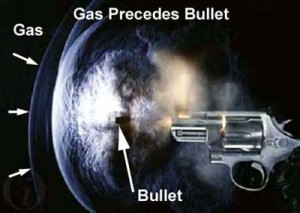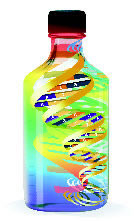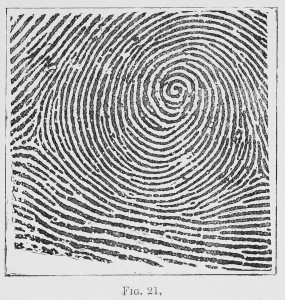
When a bullet leaves the muzzle, it is preceded by a gas bubble. Source: Alexander Jason, “Effect of Hair on the Deposition of Gunshot Residue,” Forensic Science Communications 6(2) (April 2004).
In a shooting, gunshot residue (GSR) can be found on the victim, on surfaces within a few feet of the sides of the firearm, and on the hands of the shooter. The excellent FirearmsId.com website offers a brief description of GSR generation:
When the firing pin of a firearm strikes the primer of a cartridge the primer compound ignites sending a flame into the cartridge case. Gunpowder in the cartridge case starts to burn, causing it to change from a solid material to a gas. This change creates pressure within the cartridge, which in turn forces the bullet down the barrel and down range. Pressure building behind the bullet is released when the bullet exits the muzzle of the firearm.
The bullet acts like the cork in a shook up Champagne bottle. When the bullet exits the muzzle, pressure behind it blows the gunshot residues out of the firearm’s barrel under high velocity. The residues are expelled from the barrel in a smoky cone shaped pattern.
Analysis of GSR can establish that a shooting took place and may link a person with that shooting. One day, GSR may reveal more details about a shooting. On June 18, 2012, University at Albany (New York) researchers announced that they developed a method to determine the caliber and type of weapon used in a crime by analyzing GSR. The technique uses spectroscopy with laser light. Lead researcher Igor Lednev cautioned that his team must continue their research before the method can be presented in a courtroom.


